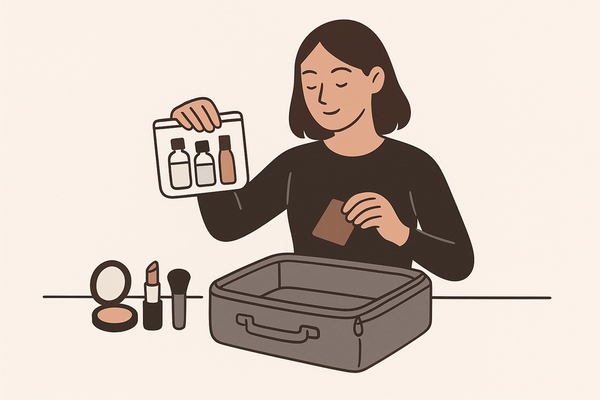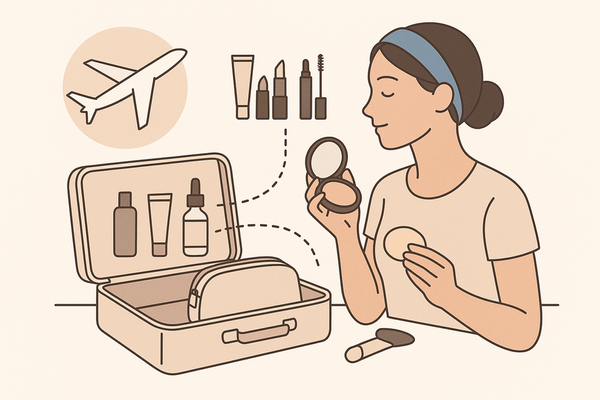Creative Makeup Designs: The Ultimate Guide to Artistic & Innovative Makeup
Explore the world of creative makeup designs with this ultimate guide, covering artistic techniques, popular trends, and tips for both beginners and advanced enthusiasts.

Estimated reading time: 15 minutes
Key Takeaways
- Creative makeup transforms the face and body into a dynamic, temporary canvas for self-expression.
- Artistic elements such as bold color theory, intricate textures, and unconventional materials elevate designs.
- Historical shifts—from tribal and theatrical roots to social-media-driven trends—have shaped modern avant-garde looks.
- Developing your own style involves brainstorming, experimentation, practice, and feedback.
- Whether you’re a beginner or an advanced enthusiast, quality tools and a willingness to innovate are essential.
Table of Contents
- Introduction
- Understanding Creative Makeup Designs
- Historical Context and Evolution of Creative Makeup Designs
- Elements of Creative Makeup Designs
- Color Theory
- Tools & Techniques
- Texture & Application Methods
- Materials & Products
- Popular Styles & Trends in Creative Makeup Designs
- How to Develop Your Own Creative Makeup Designs
- Case Studies & Real-Life Examples
- Tips for Beginners & Advanced Enthusiasts
- Conclusion
- Additional Resources
- FAQ
Introduction
Creative makeup designs are an artistic and innovative approach that transforms the face and body into a canvas for self-expression far beyond conventional beauty enhancements. This style blends fine art, theatrical makeup, and avant-garde techniques to create bold, original looks.
The popularity comes from:
- Self-expression and individuality
- Artistic freedom to experiment
- Influence of social media, runway shows, and digital platforms
- The power to visually narrate stories and evoke emotion
Understanding Creative Makeup Designs
Creative makeup is more than a beauty routine; it’s a form of performance art on skin.
Traditional vs. Creative- Traditional makeup: Enhances natural features and follows beauty norms.
- Creative makeup: Breaks rules with original, bold concepts like face painting, optical illusions, or fantasy creatures.
- Imaginative color choices (neon, pastels, dual-tone)
- Intricate patterns and textures
- Unusual materials (rhinestones, prosthetics, feathers)
- Exploration of light, shadow, and composition
Creative makeup merges painting, sculpture, and design—each application becomes a temporary artwork on skin.
Historical Context and Evolution of Creative Makeup Designs
- Early uses: Tribal rituals, theatrical performances, cultural symbols
- 20th century: Hollywood and theater used character makeup to define roles
- Late 20th century: Avant-garde editorial looks in fashion magazines and runway shows
- 21st century: Instagram and TikTok challenges spark global trends and rapid innovation
Over time, artists added new materials and techniques—social platforms turned makeup into an art movement.
Elements of Creative Makeup Designs
Color Theory
Color theory guides artists in choosing harmonious or contrasting hues:
- Primary, secondary, and complementary color schemes
- Bold color blocking for impact
- Soft gradients to convey mood shifts
Understanding symbolism (red = passion, blue = calm) elevates designs from random to meaningful.
Tools & Techniques
Essential tools for creative makeup:
- Fine-liner brushes for precise lines
- Sponges for seamless gradients
- Specialty pigments (neon, metallic, UV-reactive)
- Digital design apps for mockups: Creative Makeup Designs AI
Technique Tips:
- Use fine brushes to draw sharp patterns
- Layer pigments with sponges for depth
- Test designs in an app before live application (Artistic Makeup Inspiration AI)
Texture & Application Methods
- Gloss vs. matte vs. glitter vs. 3D embellishments
- Layering techniques for depth
- Setting sprays to lock in wear
- Mixing creams and powders for custom finishes
Experiment with setting mist between layers to prevent smudging.
Materials & Products
- High-pigment eyeshadows
- Cream and water-based body paints
- Skin-safe glitters and pigments
- Rhinestones and gems
- Prosthetic adhesives and appliqués
Invest in quality, hypoallergenic products to protect skin and ensure vibrant payoff (Trendy Art Ideas, Mastering Creative Makeup Designs).
Popular Styles & Trends in Creative Makeup Designs
- Fantasy: Mermaids, fairies, mythical creatures with shimmer and prosthetics (Trendy Art Ideas).
- Editorial/Avant-garde: High-concept runway looks using unconventional materials (Brushstroke Technical Terms).
- Body Art: Full-body murals and theme-based compositions (Design Encyclopedia).
- Optical Illusions: Surreal shading that distorts the face (e.g., Mimi Choi’s work) (Trendy Art Ideas).
How to Develop Your Own Creative Makeup Designs
- Step 1: Brainstorm & Inspiration
- Use art, nature, pop culture, or architecture
- Create digital mood boards (Pinterest, design apps)
- Sketch ideas in a notebook or tablet (Mastering Creative Makeup Designs)
- Step 2: Experiment with Colors & Patterns
- Swatch color combos on paper or forearm
- Test unusual placement (cheek, temple, neck)
- Photograph swatches to compare
- Step 3: Practice & Refine Techniques
- Focus on brush control, blending, and layering
- Practice on mannequins, friends, or yourself
- Build muscle memory for precision
- Step 4: Iterate with Photos & Feedback
- Take photos in natural and artificial light
- Ask peers or online communities for feedback
- Adjust design elements for balance and clarity
Training Suggestions: Attend workshops or masterclasses, watch YouTube and Instagram tutorials, join TikTok Lives for live tips, or use AR apps for virtual try-ons.
Case Studies & Real-Life Examples
Mimi Choi Known for surreal optical illusions, Mimi uses meticulous shading to create melting or duplicated faces. Example: a half-melted visage blending reality and art (Trendy Art Ideas).
Tal Peleg Creates miniature storytelling scenes on eyelids, inspired by classical paintings and fairy tales. Example: tiny castles and wildlife scenes under a single brow (Trendy Art Ideas).
Tips for Beginners & Advanced Enthusiasts
- For Beginners:
- Invest in a high-pigment starter kit and quality brushes
- Start with simple shapes and color blocks
- Focus on skin prep: moisturize and prime
- Practice blending techniques and proper lighting
- For Advanced Enthusiasts:
- Incorporate prosthetics, SFX kits, and 3D appliqués
- Study facial anatomy and advanced color theory
- Master lighting setups to highlight textures
- Explore AR/VR try-ons and AI-powered makeup apps (Makeup Check AI)
For virtual experimentation and progress tracking, tools like Makeup Check AI allow artists to preview and analyze designs before committing brush to skin.
Conclusion
Creative makeup designs turn makeup into wearable art, letting you express stories, moods, and characters in vivid detail. Whether you’re a novice or a pro, the key is to experiment boldly and refine your personal style. Ready to start your journey? Subscribe for tutorials, follow us on social media, and share your designs below.
FAQ
- What is creative makeup design? Creative makeup design uses the face and body as a canvas, blending fine art and avant-garde techniques to create bold, expressive looks.
- Which products are essential? High-pigment eyeshadows, cream and water-based body paints, UV-reactive pigments, skin-safe glitters, and prosthetic adhesives form the core toolkit.
- How do I develop my own style? Brainstorm themes, experiment with colors, practice techniques, and seek feedback. Over time, your unique aesthetic will emerge.
- Can beginners try creative makeup? Absolutely—start with simple shapes and color blocks, then gradually introduce more complex patterns and materials.
- How do I maintain skin health? Always use hypoallergenic, skin-safe products, remove makeup gently, and follow a proper skincare routine before and after application.




